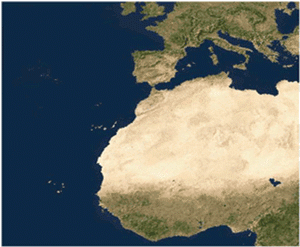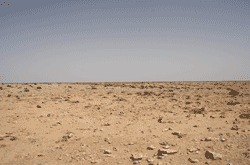Wind energy is favorably predisposed to replace fossil and nuclear electricity generation as a cleaner, safer sustainable alternative. As an inexpensive source of renewable energy, wind technology started as a European success story. Its potential could power the entire continent.

Although achievable, land-based wind electricity generation is hampered by Europe's high population density. This reduces areas upon which wind energy can be harvested. Indeed, on-shore German winds hardly match the country’s significant power consumption. To cover only a fraction of these implies the use of low wind productions sites, resulting into higher electricity costs. With most productive sites already equipped, new land-based wind installations are dropping. This hampers Europe's sustainable energy supply.
While Germany and Denmark were pioneers, other European countries are currently faced with similar challenges. In order to sustain this promising technology, the industry developed offshore wind potentials. In Europe however, many regions if not entire countries don’t have access to the sea.
Transferring low-costs green electricity and hydrogen from windier regions is therefore conceivable, particularly in today’s European energy market.
Within such context, a thinly populated desert disposes of outstanding wind resources. Exposed to the Atlantic trade winds, the Sahara coastline from Morocco to Senegal is one of the world’s windiest. A yearly production of more than 4500 Full Load Hours is generated locally with a capacity factor exceeding 60%. Morocco being connected to the European electricity grid, this wind catchment area is huge, as the Saharan coast extends beyond 2000 Km (1250 miles).
Considerable amounts of excess wind-electricity can power African and European electricity and green hydrogen markets at record-low prices. Synchronized in Alternating Current networks, such perspectives will require optimized transmission lines. In order to avoid unacceptably high losses, High Voltage DC techniques could be engaged. For capacities exceeding 12 GW, existing technologies can limit transfer losses for a single power line to less than 10% over 3000 Km (1800 miles). This distance is long enough to deliver wind-electricity from the Saharan plateaus all the way to Germany and most European power markets.

Existing Euro-Mediterranean frameworks could enable North Atlantic trade winds to sustain an economic development of the entire region. Leveraging the relative proximity of Africa and Europe to tap a widely available clean power source serves several complementary energy transition objectives.
The first will be to satisfy Africa's growing energy needs by making this renewable energy source accessible through adequate power transmission infrastructures. Excess renewable electricity could thereby be exchanged to cover Europe's significant energy consumption at minimal costs. This would be achieved while strengthening Africa's industrial, social and economic take-off, backed by accessible wind technologies.
Established since 2002 as developer of the Sahara Wind project, Sahara Wind Inc pioneered this large concept. Initiated from 1993 and presented at the European Parliament in 2002, the project inspired many political and industrial initiatives. Originating from the African continent, Sahara Wind focuses on a locally integrated development model, aimed at maximizing the economic output derived from the Atlantic trade winds.



